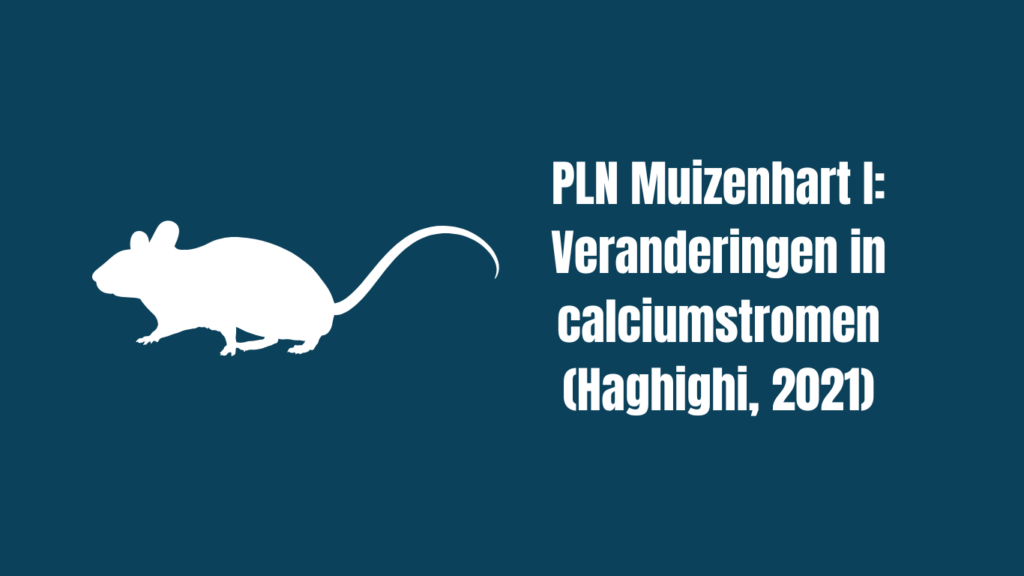In a series of three articles, we will discuss the mechanism behind cardiac arrhythmias. In these three articles, we discuss three studies in which cardiac arrhythmias were investigated at the level of single cells and of the whole heart, and then a study of a treatment. The so-called human mouse model was used for these studies.
Mouse models for PLN
In fact, there are two mouse models for PLN. One model has a mouse genome in which the mutation is inserted. In the other model, the entire PLN gene has been substituted for the human PLN gene. Although the differences in the PLN gene between humans and mice are minimal, this is important for gene therapy at the DNA level because any small change there can make a big difference. The human model has the advantage that we can use exactly the same tools for gene editing that would be administered to patients in treatment.
With a new disease model, the first step is to see how violently the disease manifests itself on the function of the heart. Of course, you want to know if your model is indeed a good model of the disease. In the PLN mice, the heart had a normal shape and structure. However, the conduction of the electrical signals that make the heart beat was found to be different. In PLN mice, the heart beat more frequently and palpitations were more common. Both problems occurred mainly on the right side of the heart and where the pulmonary arteries exit the heart. In addition to these two disturbances of rhythm, a predictor of arrhythmias was also found to be present.
Cardiac imaging of mice
Indeed, in PLN mice, the time between heartbeats is ever so slightly different. This indicates that the PLN heart does not beat neatly in rhythm and thus has an increased risk of rhythm disturbances. A possible cause of this is that the PLN heart does not conduct the currents that activate the heart to contract as well. The speed of these currents was slower and the amount of current was also less.
This was evident from the mice’s cardiac echocardiograms (ECGs). To see if this corresponded to patients, the same measurements were taken on patients’ heart monitors. What emerged? Many of the changes were found there, too. This is an indication that the mouse model accurately reflects the situation in patients.
To look in more detail at the changes taking place, heart cells were isolated from the mouse hearts and examined further. In particular, calcium flows in cells from the right ventricle were disrupted. During each heartbeat, calcium is released from storage in the cell, causes a contraction and is then reabsorbed. In PLN cells, the peak of release appeared to be lower, calcium took longer to return to storage, and more calcium remained in the cell.
In addition, the heart cells contracted less vigorously and contraction and relaxation were also delayed. In addition to calcium being released with each heartbeat, some calcium also escapes. This is problematic. This is because the extra calcium can cause spontaneous activation and thus additional contraction of a heart cell. As a result, the heart cell becomes out of rhythm. Thus, the changes previously found throughout the heart find their cause in problems at the cellular level.
RNA STUDIES
All these changes, of course, come from somewhere. To use a broad technique to see what is going wrong in the cell at the molecular level, the RNA was examined. With this technique, you can map all the RNA in PLN and healthy hearts and then see which genes are more or less active. Genes involved in calcium regulation or more generally in electrical activation of the heart were altered. Other altered processes in PLN hearts are involved in protein folding and the stress that can occur when this goes wrong.
Thus, this study shows that changes occur at several levels that can cause cardiac arrhythmias: genes are expressed increased or decreased, cells are activated differently and conduction in the heart is slower. This means that the arrhythmias in PLN are not so much a consequence of heart failure, but a direct result of the genetic change. In the next article, we will discuss how the arrhythmias occur. Perhaps the most important thing about this article is that the mouse model developed for this study has been used for at least six other articles, making an important contribution to PLN research!
The authors of this study
This research was done in the lab of Professor Kranias in New York. Professor Kranias has been called the mother of phospholamban because of her many and important research studies on the protein. It was in Professor Kranias’ lab that the R14del mutation was discovered in 2006. Kobra Haghighi is first author on this paper and thus did the main part of the experiments and analyses….
Haghighi, 2021, J. Pers. Med. Impaired Right Ventricular Calcium Cycling Is an Early Risk Factor in R14del-Phospholamban Arrhythmias
